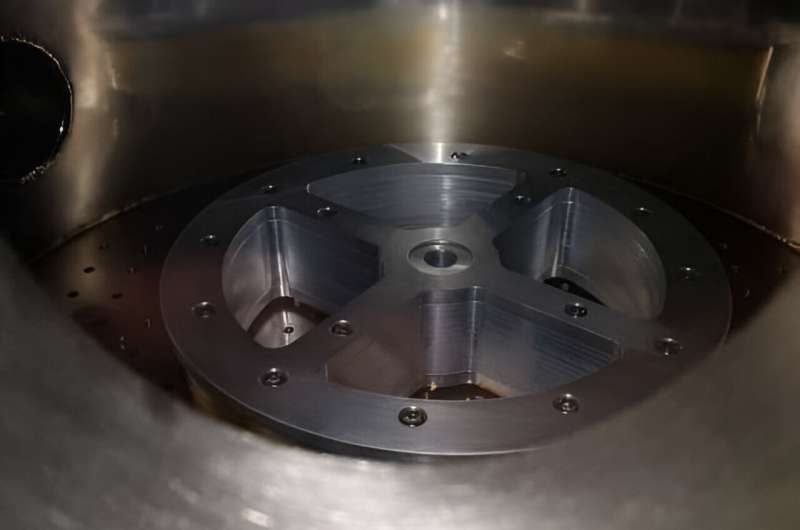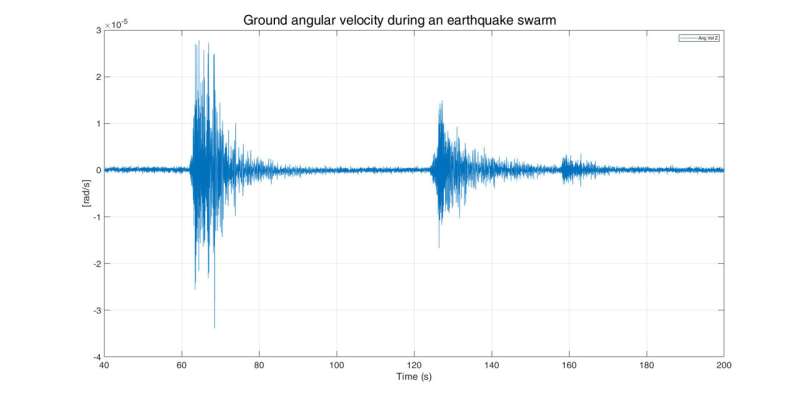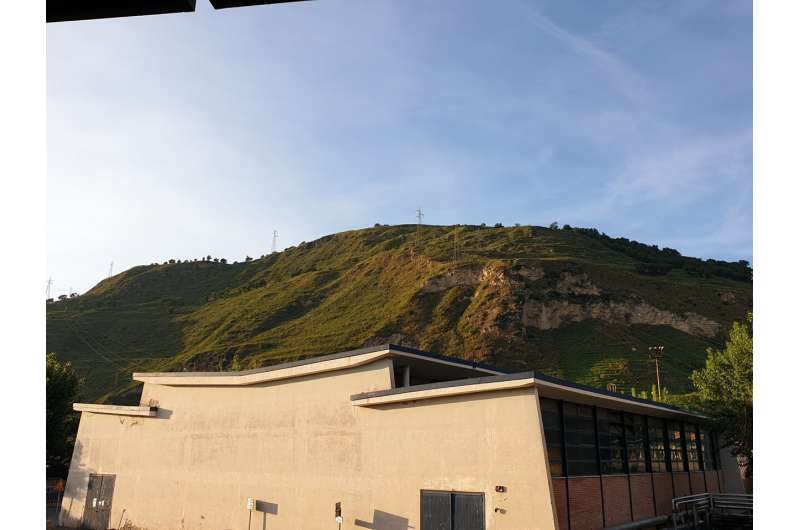This article has been reviewed according to Science X's editorial process and policies. Editors have highlighted the following attributes while ensuring the content's credibility:
fact-checked
trusted source
proofread
Highly sensitive fiber optic gyroscope senses rotational ground motion around active volcano

Researchers have built a prototype fiber optic gyroscope for high resolution, real-time monitoring of ground rotations caused by earthquakes in the active volcanic area of Campi Flegrei in Naples, Italy. A better understanding of the seismic activity in this highly populated area could improve risk assessment and might lead to improved early warning systems.
"When seismic activity occurs, the Earth's surface experiences both linear and rotational movements," said research team leader Saverio Avino from the Consiglio Nazionale delle Ricerche Istituto Nazionale di Ottica (CNR-INO) in Italy. "Although rotations are generally very small and not usually monitored, the ability to capture them would provide a more complete understanding of the Earth's internal dynamics and seismic sources."
In the journal Applied Optics, the researchers report preliminary observational data from the rotational sensor, which is based on a 2-km long fiber-optic gyroscope. The sensor performed well while continuously recording data over five months and was able to detect noise and ground rotations from small to medium local earthquakes.
The metropolitan city of Naples has a population of around 3 million people and three active volcanoes. The entire area is covered by a grid of multiparametric sensors that provide real-time monitoring of various physical and chemical parameters used to study seismic and volcanic activity.
"The measurement of ground rotations will add another tile to this complex mosaic of sensors," said research team member Danilo Galuzzo from the National Institute of Geophysics and Volcanology (INGV).
"This additional information will also aid in the comprehensive understanding of volcanic earthquake signals, which are crucial for detecting any changes in the dynamics of volcanoes."

Measuring rotational movement
Gyroscopes are devices used to detect and measure changes in orientation or angular velocity—the rate at which an object rotates. For example, in smartphones simple gyroscopes detect and measure the device's orientation and rotation. To measure rotation in seismic waves from an earthquake or volcanic activity, the researchers developed a more complex gyroscope based on the Sagnac effect.
The Sagnac effect occurs when light traveling in opposite directions around a closed loop exhibits different travel times. This leads to measurable interference patterns in the light that depend on the rotation rate of the loop. By measuring the light interference, the angular velocity can be detected with high resolution.
"Our labs are located in the heart of an active volcanic area, thus creating a natural source of earthquakes," said Avino. "Because we experience small/medium earthquakes almost every day, we can measure and acquire a large number of data on ground rotations, which can be successively analyzed to study seismic and volcanic phenomena of the Campi Flegrei region."
Capturing seismic activity
The researchers assembled a prototype fiber-optic rotational sensor using standard laboratory instrumentation and components. To test it, they injected light into a 2-kilometer-long optical fiber cable, similar to the ones used for optical telecommunication.

The fiber cable formed a loop where the input and output are connected, creating a continuous light path with no breaks, and was precisely wound around an aluminum spool with a diameter of 25 cm to form a coil.
During the experiments, the optical sensor is kept in a controlled laboratory environment in a building that sits on top of a volcano caldera—a large depression formed when a volcano erupts and collapses.
"This first version of the system showed a resolution comparable to other state-of-the art fiber-optic gyroscopes," said the paper's first author Marialuisa Capezzuto, who is from CNR-INO and worked on the experimental apparatus. "It also had a very good duty cycle—the time percentage the instrument is measuring/acquiring data —which allowed us to run the system continuously for around five months."
"The prototype gyroscope can only measure one of the three directional components of the rotation movement. However, combining three of the same gyroscopes, each oriented to capture a different axis of rotation, could be used to capture all three components," said Luigi Santamaria Amato from the Italian Space Agency (ASI).
Once the researchers have improved the resolution and stability of the single-axis system, they plan to set up a three-axis gyroscope. Eventually, they want to create a permanent ground rotation observatory in the Campi Flegrei area.
More information: Marialuisa Capezzuto et al, Fiber-optic gyroscope for rotational seismic ground motion monitoring of the Campi Flegrei volcanic area, Applied Optics (2024). DOI: 10.1364/AO.518354
Provided by Optica





















